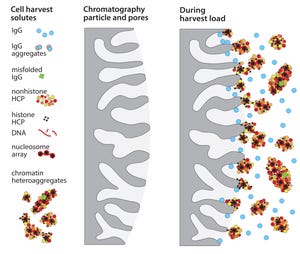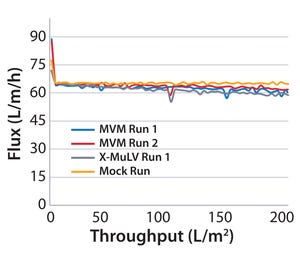WWW.COPPERHOUNDPICTURES.COM
Are you protecting your trademarks? Are you sure? You’ll notice that BPI doesn’t use registration marks (e.g., ™ and ®) anywhere but in advertisements and the occasional “advertorial” piece. Ever wonder why? According to the official stylebook of the American Chemical Society, which is the basis of our “house style,” they are entirely unnecessary. And editors everywhere dislike the impression they give as well.
On page 157 of the ACS stylebook,
trademarks
(“brand names”) are defined as adjectives that describe proprietary materials or products. Registration marks are “not necessary to ensure legal protection .” Many professionals in the public relations world are surprised to learn this when we share it with them. And it does sort of make you wonder what the point of those little marks is. Were they invented for use in advertising materials, where creativity and persuasion take priority over accuracy?
Perhaps a more relevant question for those of you seeking to communicate an...
Welcome New Editorial Advisor
Kavita Ramalingam Iyer is associate director and product lead of GRACS-CMC for vaccines at Merck Sharp & Dohme Corp. She received her PhD in biotechnology from Anna University (India) and completed a postdoctoral fellowship at the University of Minnesota (focusing on antibody engineering and synthetic biology) before joining Merck in 2008.
Kavita has over 10 years of pharmaceutical industry experience leading chemistry, manufacturing, and controls (CMC) development; manufacturing; establishment of good manufacturing practice (GMP) facilities; technology transfer; talent development; strategic initiatives; and performing site audits. She is a certified lean/six-sigma black belt. As regulatory lead for investigational and marketed vaccine and biologics products within Merck’s Global Regulatory Affairs and Clinical Supply (GRACS) organization, she is responsible for managing product dossier life cycles; developing, shaping, and implementing CMC regulatory strategies in complianc...
WWW.STORYBLOCKS.COM
The robust regulatory environment surrounding biotechnology and bioprocessing demands a comprehensive current good manufacturing practice (CGMP) culture of quality, compliance, and absolute adherence to policy. Employees need to be engaged in their work, with a laser focus on meeting stringent specifications and operating under tight controls. A misstep in quality or compliance can lead to hefty fines, legal concerns, regulatory retaliation, and reputational damage.
Communication and stakeholder engagement are critical to aligning organizations and driving the right culture in highly regulated environments. This is essential during times of rapid change such as when systems, processes, and technologies are evolving and when organizations are expanding into new and emerging markets, integrating new employees, and implementing productivity initiatives. Research has shown that effective communication is a vital part of project management, technology adoption (
1
) and merger and acquisiti...
Figure 1: Full-factorial DoE (molecule 1) with three levels of ammonium sulfate concentration (0.7M, 1M, and 1.4M) and membrane loading (50 mg/mL, 100 mg/mL, and 150 mg/mL). Responses studied were percent yield in flow-through product, clearance of high–molecular weight (HMW) impurities, and HCP clearance.
Given paradigm shifts in the biopharmaceutical industry over the past decade, product development timelines are squeezed as the number of molecules entering clinical development continues to increase. Manufacturing facilities, especially those supplying clinical trial materials, have had to adapt to this trend. One popular approach is to have fully disposable equipment that allows for quick product changeover and flexible manufacturing capacity to respond to variable clinical demand. Although many facilities-related technologies exist to support that concept (e.g., disposable probes and mixers, single-use skids, and bioreactor bags that support extended production cultures), process design and developme...
Figure 1: Fouling of chromatography particle surfaces by compound contaminant associations
One of the early disappointments in development of immunoglobulin G (IgG) purification technology was ultrafiltration on membranes with 50–100 kDa cutoffs. Sodium dodecyl sulfate polyacrylamide gel electrophoresis (SDS-PAGE) showed that most host cell proteins were smaller than that. IgG was retained. Parallel concentration and buffer exchange could be performed going into a follow-on polishing step. These features made it an obvious candidate for initial capture, but it did not perform as hoped. Membrane fouling sabotaged its concentration–diafiltration potential, and prohibitive levels of host contaminants remained in the IgG fraction. Protein A affinity chromatography became established as the preferred capture method. Ultrafiltration was consigned to the supporting role of concentration and diafiltration after purification was essentially complete.
Protein A has since proven to be consistent and highly competent...
Figure 1: Effects of uridine–Mn–galactose mixtures on glycosylation of MAb 3 at culture harvest
In
Part 1 of this report
, we described our development of a high-throughput assay for analyzing monoclonal antibody (MAb) glycans and how we used it to evaluate the effects of medium supplements on galactosylation of MAbs produced by two different cell lines (
1
). This month, we examine galactosylation of a MAb produced by a third cell line. A discussion follows on the benefits of this high-throughput assay before we highlight the similarities and differences in galactosylation among the three MAbs in our study.
Results for Cell Line 3
Our study on the third cell line was similar to the studies for cell lines 1 and 2. Cell line 3 was cultivated in shake flasks with Gibco Dynamis medium and supplemented with EfficientFeed C+ supplement (EFC+), both from Thermo Fisher Scientific. Maximum cell densities ranged from 1.7 to 2.5 × 10
7
cells/mL, and culture viabilities at harvest were 42–78%. Despite those wide r...
Figure 1: In the first chromatographic step of purification of F-IX from human plasma by anionexchange (AEX) chromatography, human plasma after cryoprecipitation was loaded onto an AEX resin, and F-IX was eluted with a 0.3M NaCl-step gradient.
Human clotting factor-IX (F-IX) is a glycoprotein that is essential for normal hemostasis (
1
). A deficiency of F-IX in human plasma is caused by an absence or functional mutation of the F-IX gene that expresses inactive F-IX in plasma. That leads to hemophilia B (“Christmas disease,” named after its first identified patient), a genetic disorder in which the blood-clotting cascade is disturbed (
2
,
3
).
The structure and amino-acid sequence of F-IX are similar to those found in other vitamin-K–dependent glycoproteins. Apart from F-IX, these clotting factors include factor II (F-II), factor VII (F-VII), factor-X (F-X), and protein C. F-IX has an apparent molecular mass of 55,000–65,000 Da (
4
–
8
). Calculated from the amino acid sequence alone, its predicted mole...
Table 1: Traditional viral clearance (VC) execution (percent virus spiking without large-volume testing) compared with total viral challenge (including large-volume testing) — anticipated VC results
Biologics derived from mammalian organisms have been accepted for therapeutic use for almost a century (
1
). However, these pharmaceuticals have the potential for contamination with pathogenic adventitious agents such as viruses. With cell-line–derived recombinant proteins, the viral risks commonly include viruses in the
Retroviridae
and
Parvoviridae
families (
2
). As patient safety and manufacturing facility suitability became significant concerns in the 1980s and 1990s, several industry and regulatory bodies reached consensus on how to approach the unique challenges of viral safety in biotherapeutics (
3
–
5
).
The resulting “safety tripod” brings together three principles in a systematic approach that provides both patient safety and risk mitigation in the manufacturing of biotherapeutics. First, a ri...
Xenotropic murine leukemia virus (XMuLV), one of the model viruses used in this study. WIKIMEDIA COMMONS (HTTPS://COMMONS.WIKIMEDIA.ORG)
Most recombinant monoclonal antibodies (MAbs) are produced by mammalian cells. Because biopharmaceuticals derived from mammalian tissue culture carry the risk of adventitious virus contamination, regulatory agencies expect risk-mitigation strategies to include validation of purification unit operations for their ability to clear viruses (
1
). Guidelines from the International Council for Harmonisation of Technical Requirements for Pharmaceuticals for Human Use (ICH) describe how to prove viral clearance in downstream purification processes using an orthogonal approach (
2
). Viral log
10
reduction values (LRVs) are determined for orthogonal steps and combined to calculate the cumulative log viral reduction for an entire process (
3
,
4
). Regulatory agencies typically expect drug sponsors to be able to describe their mechanisms of viral clearance in detail (
4
).
Down...
The drug development landscape is awash with candidates that have shown enormous promise and efficacy in preclinical models but failed when administered to clinical trial subjects. Although such failures occur for different reasons, one of the most pervasive causes is the inability of preclinical models to recapitulate human physiology accurately. Despite advances with both in vitro and in vivo models, improving those toward a more accurate avatar of the human physiological process remains a challenge. Central to that effort will be incorporating results from human clinical trials that show investigators why some patients respond to a given therapy but others do not. Such knowledge could guide researchers to design their models more accurately. By reflecting human physiology, models can predict clinical responses to particular drug treatments more precisely.
Translational Medicine — Reversed
Over the past several years, a surge of translational medicine research across multiple therapeutic areas has broug...














